How to Write a Brand Story That Excites Your Customers
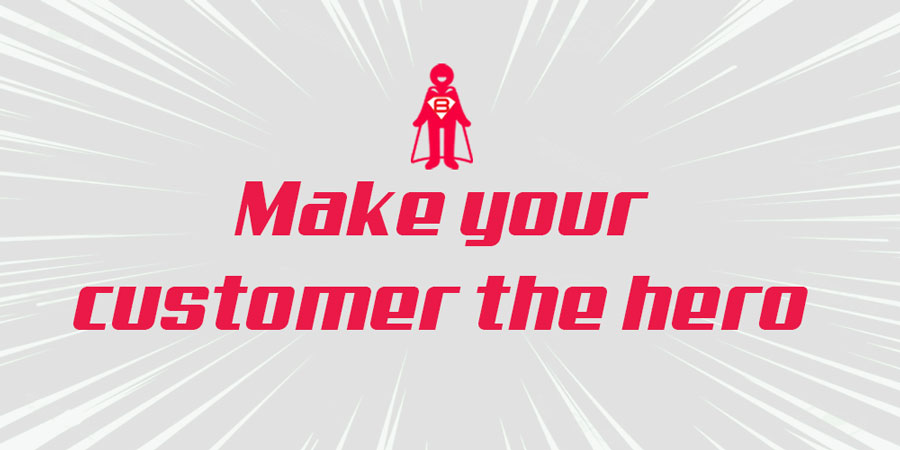
Storytelling is a powerful tool for connecting with your audience. With increasing competition and a greater need to stand out, more businesses are trying to win attention by creating a brand story.
But the problem is, most of these stories aren’t exactly Game of Thrones material. Many brands try to force a confusing and irrelevant story onto customers. This happens when companies focus on what they care about, not on the customer. The result? At worst, a misstep with your brand story can mean lost sales and indifferent customers. At best, your message won’t get across nearly as effectively.
So what is a brand story? It’s much more than talking about how your business got started. Your brand story is a cohesive message that you communicate every time you talk to your audience, whether it’s on your website, social media posts, or printed materials. For example, clothing brand Everlane’s message about being ethical and transparent comes through in everything from case studies about factories they work with, to how they openly share the true cost of each product in their online store.
A well-crafted brand story that empathizes with your audience will stir up their emotions and spark their interest. Inspired by StoryBrand’s framework for writing a brand story, we show you how to invite customers into a story they’ll be excited to be part of.
Content
- Make your customer the hero
- Your brand is the guide
- Give them a plan
- Call them to action
- Failure is an option
- The outcome of the story
- Conclusion
1. Make your customer the hero
Every good story needs a hero. And when you’re promoting your business, it seems like the obvious choice for the hero would be your brand. After all, your brand is what your story is all about. Your brand is what will swoop in and save the day, like Batman.
But the problem is, your customer doesn’t care about your brand until they understand how you can help them. So to get them interested in the story, you need a hero you know they’ll connect with – themselves.
Begin your brand story by talking about your customer. What do they want? What problems do they need to overcome? The problem might be:
- An external problem (e.g. it’s difficult to learn to code)
- An internal problem (e.g. longing to be a digital nomad)
- A philosophical problem, which goes beyond the product itself into ideas about how things should be (e.g. wanting to contribute to a better world)
Try to address the problem on all three levels for the greatest impact.

See how career coach Makenzie Chilton of Love Your Mondays keeps the focus on her customer by outlining their problem before introducing herself. She taps into external problems (e.g. hating their job); internal problems (e.g. wanting fulfilling work); and philosophical problems (e.g. the idea that doing work we’re passionate about helps create a better world).
2. Your brand is the guide
A common story structure is the ‘hero’s journey’. This is where the main character ventures into the unknown and is aided by a mentor or guide, who helps them succeed. Your brand’s role is to guide the customer through their hero’s journey.
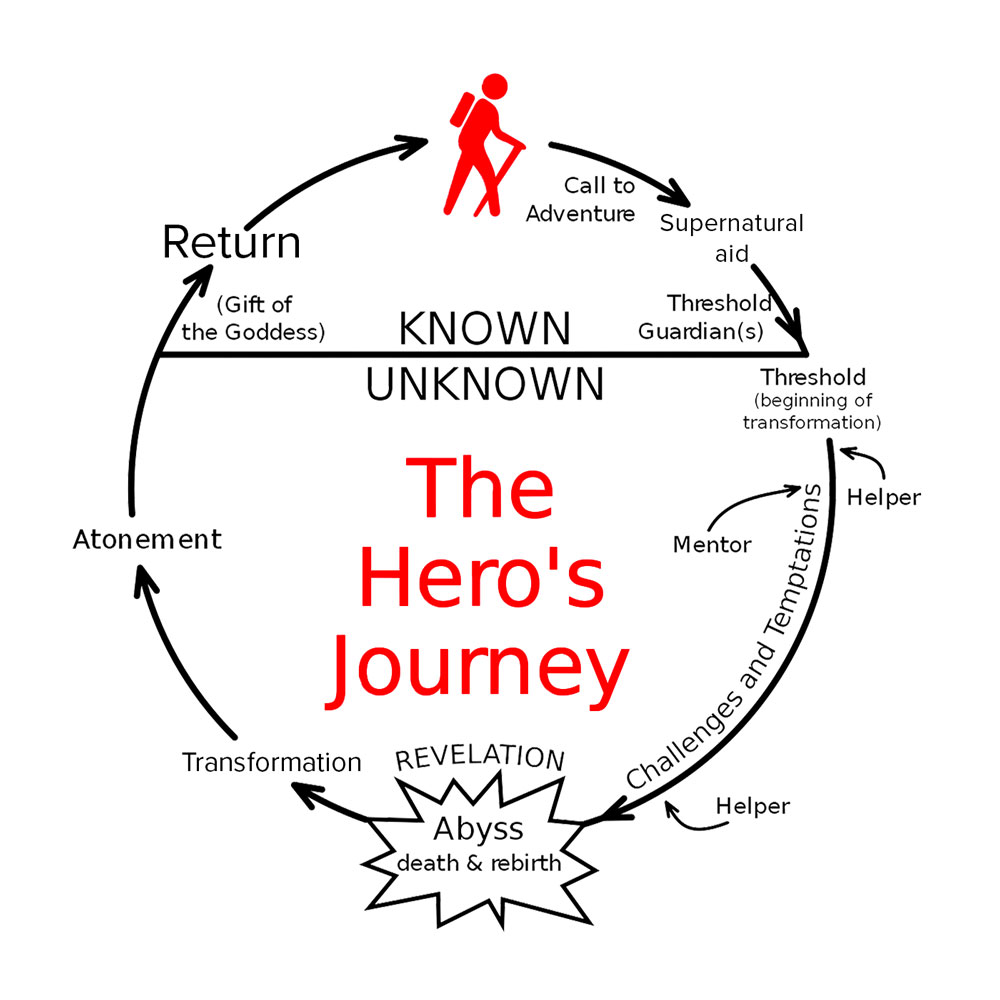
The hero’s journey is a story template you’ll find in a lot of popular books and movies.
So once you’ve introduced the hero (your customer), along with the problem they need to overcome, it’s time to present yourself as their guide. There are two main ways to do this:
- Show empathy by addressing the customer’s pain points and letting them know you care. Don’t just mention their problem and move on; show you understand by expanding on how the problem shows up in their life. This shows you understand their plight, which is the first step to helping them solve it. Then, you can give them hope and show them it doesn’t need to be this way.
- Show authority to prove you know how to help them. This is where you introduce your brand and say why you’re qualified to solve their problem. For instance, you might tell them how many people you’ve helped already, or share a testimonial.

Check out how fitness programme Bony to Bombshell positions itself as a helpful guide for its customers. With a target audience of women who are naturally slim and want to gain weight, the programme’s ‘about’ page focuses first on the key problem (that most fitness programmes are designed for losing weight, not gaining it) and gives details about their hero’s struggle. Second, the founders boost their authority by sharing their own stories of gaining weight successfully, as well as the number of women they’ve helped so far.
3. Give them a plan
Even if the customer believes you can solve their problem, they still need to understand how to take action. So give the hero a plan to follow, which will lead to success.
You can do this by summarizing how to overcome their challenges. Your plan should be easy to follow, such as giving them three steps to success. This gives them hope and offers a vision of a better life.

See how Shopify makes it seem easy to use their services by laying out what you get when you sign up. Each point addresses concerns their customers might have, such as not having design skills, worries about pricing, and not knowing how to set up secure payment systems.
4. Call them to action
Don’t just state your plan and leave it at that. Ask them to take action, even if you think it’s obvious what they should do next.
In this busy world, most people who read your story will do so on autopilot, with twenty other tabs open in their browser. So you need to make it easy for them. Give them a clear sign of what to do next – such as a big, bright button that asks them to purchase your product, sign up to your course, or join your email list.
5. Failure is an option
Make sure you let customers know what might happen if they don’t buy your product.
The risk of failure is powerfully motivating. It creates a sense of urgency and encourages people to take action. Remember, taking action feels risky. So if there’s no downside to standing on the sidelines, they might not take the step of buying your product – even if they think it could help them.
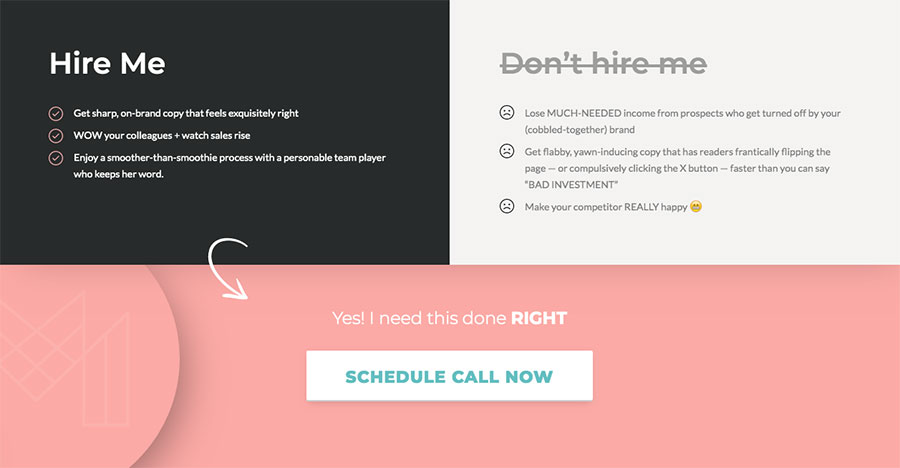
Copywriter Michal Eisikowitz isn’t shy about letting potential clients know what their fate will be if they don’t hire her. See how she spells out what their life will be like with her on their team, compared to the devastating failure of not taking action.
6. The outcome of the story
Every story needs a climactic ending. So take them to the final scene of the story, where they will enjoy success (if they follow your guidance, of course).
This is the time to show the hero’s character transformation, or the change that will happen in them and their life. Give them a vision of the life they’ll enjoy with the help of your product.
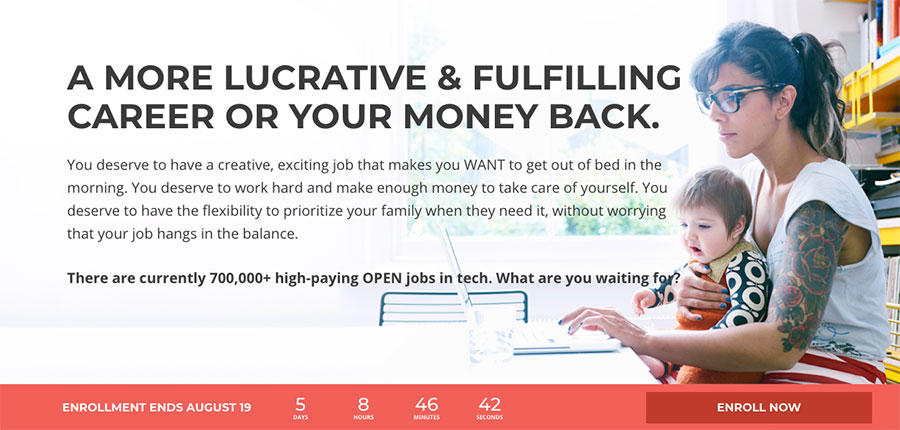
Check out how online coding programme Skillcrush paints a picture of how its potential customer could break out of their 9-5 cubicle job into flexible, well-paid work they love.
So what does a well-crafted brand story look like when it all comes together? SILKE London, which sells beautifully designed silk hair wraps and hair ties, ticks all the boxes with its website:
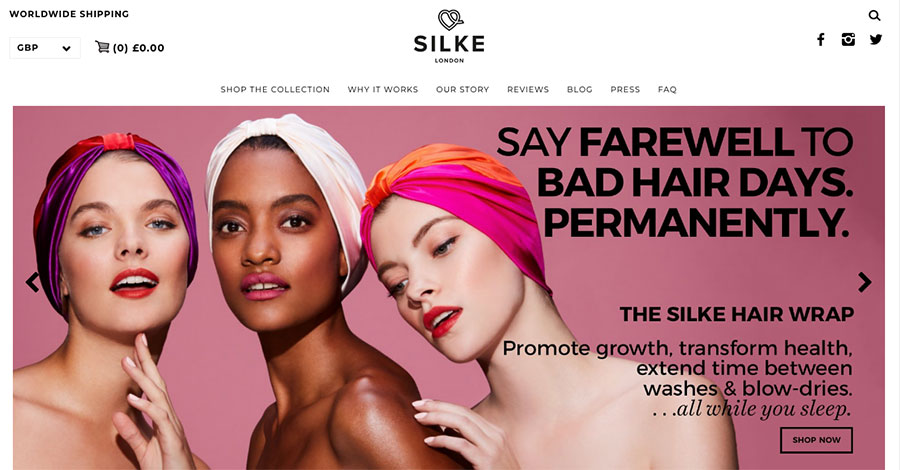
- The customer’s external problem is clear: broken, split and frizzy hair and the bad hair days that come with it. The website also addresses the internal problem of wanting to be the type of person who wears glamorous silk hair wraps, and the philosophical idea that natural beauty is best. Focusing on the customer’s struggle and what they are striving for sets them up as the hero, because the story is centred on them.
- SILKE London then presents itself as the guide that will lead the customer to success. The brand introduces its luxurious hair wraps and ties, and the expertise that went into creating them.
- The brand outlines a plan for success, offering clear benefits of wrapping hair in silk before presenting its product options.
- Calls to action are peppered strategically throughout the site, making it obvious what the customer needs to do to buy the products.
- The consequences of failure are mentioned in detail. In particular, the nightly damage caused by friction against a cotton pillowcase is presented as a reason for customers to act now, rather than risk further hair damage.
- SILKE London presents its customers with a glamorous vision for the future: glossy hair and being able to wear their luxurious products.
For more examples of well-crafted brand stories, check out StoryBrand’s three case studies.
7. Conclusion
Take a look at how you’re communicating with customers, from your website to your business cards. Ask yourself: are you making the story about your brand, or about your customer? By inviting customers into a story where they’re the hero, you’ll capture their attention and boost your sales.
Want more actionable tips to help take your branding, design, and marketing knowhow to the next level? Subscribe to our newsletter—delivered straight to your inbox once a month.